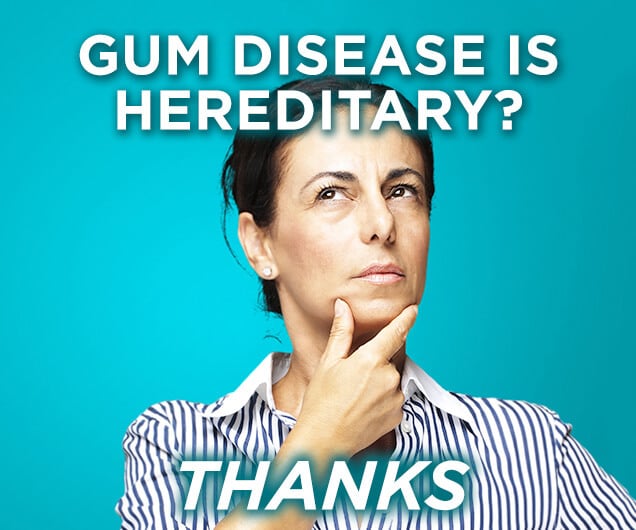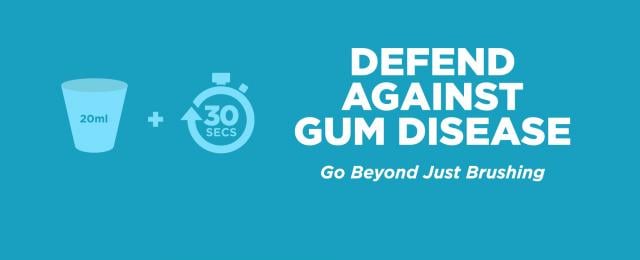It’s easy to miss the signs of gum disease. According to one professional dental association, just 10% of adults who have gum disease are aware of it. But if you have puffy, red gums that bleed easily when you brush or floss, you could have gingivitis. There may not be pain associated with gingivitis, which is why the signs may be overlooked.
From puffy to receding and bleeding gums, if you’re noticing changes in your mouth and aren’t sure what’s going on, brush up on the red flags of gum disease to see if what you’re experiencing may be signs of this gum infection.
Overlooking bleeding gums after brushing or flossing might not seem like an issue at first, but there’s good reason to keep track of these signals – which are early signs of a very treatable, reversible form of gum disease. Left untreated, this mild stage of gum disease can progress to an advanced stage, which permanently damages the bones and tissue that hold teeth in place. Pay attention to these most visible signals your body is sending you and keep your mouth healthy.
Symptoms of gum disease include:
- Red Gums (Redness or Inflammation of Gums)
Red is the warning-sign color for danger. So it makes sense that if you start peeking in the mirror and seeing gums that are a shade of red or are purplish, this could signal gums that are in trouble. Healthy gums are firm and pale pink. Bacteria can cause inflamed gums, which is known as gingivitis, the early, mild stage of gum disease, or periodontitis, the later, more serious stage of the disease.
- Sore Gums
In the early stage of gum disease, gums can also swell as they become inflamed. This is a sign that you want to start adhering to a more solid oral-care routine.
- Bleeding of Gums
Having bleeding gums, when you spit into it after brushing and/or flossing is another symptom of gum disease. Gums that bleed easily signal early-stage gum disease.
- Receding Gums
Gums Are Pulling Away from Your Teeth. If your teeth are starting to look bigger than normal, and you notice receding gums or gums that pull away from your teeth, this is another classic sign of early gum disease or periodontitis. It's not just a natural part of ageing.
- Bad Breath
Bad breath, or having an exceedingly bad taste in your mouth, can also signal early gum disease. Plaque buildup on the tongue is usually the culprit to bad breath.
- Dissecting red, Puffy and Irritated Gums
If your gums are red, swollen and irritated, and you notice gum bleeding after you brush or floss, these are some of the first signs of early gum disease, or gingivitis, which is quite common. Gums go from healthy pink and firm to irritated, red and puffy due to increasing amounts of plaque on the teeth as the body’s inflammatory response kicks in. When the gums are inflamed and agitated, they bleed easily when brushed or flossed.
The most common cause of irritated gums is an inconsistent oral hygiene routine at home. Improper brushing technique can also exacerbate these issues. Not brushing and flossing regularly or properly allows food and bacteria to lodge in between the tooth and gums creating a home for bacteria to multiply and become dental plaque. This buildup of plaque at the gum line, if not removed with a good, healthy clean-mouth routine, can harden into tartar, which can only be removed with professional dental tools.
What’s crucial to know if there is a window of time when gums are bleeding and inflamed when you can still reverse the gum infection in its infancy simply by improving your oral hygiene. So, while gingivitis is not serious, it needs to be taken seriously and acted on, or it will become advanced gum disease (periodontitis), which is the leading cause of adult tooth loss. Rinse twice daily, stick to gentle, twice-daily brushing with a soft bristle or electric brush and floss once daily. Also, be sure to schedule regular dentist visits for plaque and tartar removal.
Other unique changes in your mouth spurred by gum disease could also include tender-to-the-touch gums, odd new spaces forming between your teeth, loose teeth and/or a change in your bite or the way your teeth fit together when you bite. These are signs you should not ignore. If you take control of your gum situation, there's still a chance for you to avoid advanced gum disease.








